Search Papers
48 papers
THE INFLUENCE OF RELIGION ON THE SUSTAINABLE DEVELOPMENT OF LOCAL ETHNIC MINORITIES IN THE SOUTHERN CENTRAL HIGHLANDS TODAY
Huynh Ngoc Thu, Le Thi My Hà
Sustainable development is a crucial issue that has been particularly emphasized by the Party and the Government of Vietnam, especially in areas with a large population of ethnic minorities. The Southern Central Highlands is currently home to nearly 50 ethnic groups, among which local ethnic minorities such as the Ê Đê, K’ho, and M’nông are striving to develop their economy, culture, and society sustainably. However, this development process faces numerous challenges from both objective and subjective factors, including natural conditions, government development policies, ethnic psychology, and religious factors. At present, Catholicism and Protestantism are the two main religions within the ethnic minority communities of the Southern Central Highlands. Introduced to the region from the late 19th to early 20th century, these two religions flourished in the second half of the 20th century and have become major elements in the spiritual lives of the communities. Religion has had and continues to have significant impacts on the economic, cultural, and social development of local ethnic minorities, contributing positively to the process of sustainable development. This article uses data collected from the community through participant observation, in-depth interviews, and survey questionnaires to analyze the impact of religion on the economic, cultural, environmental, and social aspects of local ethnic minorities in the South Central Highlands in the context of sustainable development.
GEMINI GOOGLE: A POTENTIAL TOOL FOR ENGLISH LEARNING
Nguyen Phuong Duy Anh
Based on previous surveys, it is evident that Food Technology students at Thu
Dau Mot University face challenges in learning English, such as limited
vocabulary, weak grammar, inaccurate pronunciation, and poor listening and
speaking skills. These can lead to declining academic performance and restricted
career opportunities. The paper highlights the potential of Artificial Intelligence
(AI) in overcoming these challenges. AI tools like Gemini Google can provide
personalized learning experiences, improve interaction with the language, and
offer immediate feedback. Gemini is specifically chosen due to its free access,
Vietnamese interface, and support for over 40 languages. This study
demonstrates that Gemini is an effective tool for undergraduate students,
particularly those in Food Technology who have weak English backgrounds, to
improve their English skills. Gemini improves vocabulary, grammar, speaking,
listening, pronunciation, reading, and writing. It offers simple instructions and
ideas in both English and Vietnamese, making it ideal for beginners, selflearners, and people with limited English proficiency. Unlike traditional
learning, Gemini provides access at any time and from any location, as well as
the ability to overcome shyness and blunders. Gemini's large, up-to-date
database and user-friendly interface enable personalized learning paths and can
be paired with other methods for best language learning. The study also proposes
various strategies for utilizing Gemini Google to improve English learning
effectiveness in areas like vocabulary, grammar, listening, speaking, reading,
writing, and creating a positive learning environment. Furthermore, Gemini's
value extends beyond languages, offering assistance in a variety of other areas.
RESEARCH ON COOKING OIL ABSORBENT PADS USING WATER HYACINTH MATERIALS
Nguyen Thi Xuan Hanh, Nguyen Hong Hai Duy, Tran Thi Khanh Hoa
ABSTRACT
Cooking oil is an indispensable ingredient in everyday family cooking. The oil after use is often discharged directly into wastewater systems, leading to risks of environmental pollution, water pollution, clogging of drainage systems... In recent years, water hyacinth plants have been considered weeds, floating on rivers, canals, ponds and lakes, obstructing the circulation of boats and preventing water flow. Water hyacinth plants are often found in large rivers and almost no one cares about their uses, making them truly wasteful.
Realizing the flexibility of water hyacinth when dried, it can be woven into pieces with good absorbent properties, our team has researched using water hyacinth as a material to absorb used cooking oil that is discarded into the environment. school. The research uses the main methods of experimental method and sample analysis method in its research. The result is that a product that absorbs discarded cooking oil scum is formed and is tested for cooking oil contaminated water with results consistent with QCVN 14:2008/BTNMT. The purpose of the research is to find effective products to absorb discarded cooking oil to save costs and contribute to environmental protection. The problem of using naturally available materials to create products that absorb cooking oil scum at the same time solves two current environmental problems. The research is a preliminary result, so there are still many shortcomings. We hope that in the future there will be further research to make the product more and more perfect
SUITABILITY OF THE HOSPITAL WASTEWATER TREATMENT SYSTEM IN BINH DUONG PROVINCE TO THE ENVIRONMENTAL CARRYING CAPACITY
Đao Minh Trung
As the number of healthcare facilities increases, stringent management of
wastewater treatment systems becomes imperative. This study investigates a
wastewater treatment system designed for a general clinic in Bình Dương
Province, Vietnam, which complies with Vietnamese environmental standards.
The clinic, located in Bến Cát City, serves approximately 200 patients per day
and generates an average wastewater volume of 1.7m³/day. The treatment
system, with a capacity of 10m³/day, employs a combination of biological and
chemical methods, including anoxic and aerobic processes, to efficiently reduce
pollutants. Results indicate that the treated wastewater meets the QCVN
28:2010/BTNMT, column A standards, ensuring minimal environmental impact
when discharged into the Thi Tinh River. The study demonstrates the system's
effectiveness in managing hospital wastewater, contributing to environmental
protection and public health.
This paper presents a comprehensive analysis of the wastewater management system implemented at a medical center located within the Bau Bang Industrial Park in Binh Duong province, Vietnam. With a staff of 166 and 60 beds, the facility operates in accordance with TCVN 4470:2012 General Hospital design standards, serving a diverse range of water demands including domestic, medical, and auxiliary requirements. The wastewater management system is meticulously designed to handle both rainwater and wastewater separately. Rainwater is efficiently collected through surface and roof drainage networks, while domestic and medical wastewater undergo discrete collection processes. The medical center's wastewater treatment facility, operating at a capacity of 100 m³/day, employs a multistage treatment process to ensure compliance with stringent regulatory standards (QCVN 28:2010/BTNMT, column B, K = 1). This process includes preliminary treatment, anaerobic and aerobic biological treatment, membrane filtration, and disinfection. The facility consistently meets quality parameters outlined in QCVN 28:2010/BTNMT, exhibiting effective removal rates for organic pollutants, suspended solids, ammonia, phosphates, and pathogens. Furthermore, the medical center demonstrates commendable environmental stewardship through its stormwater drainage infrastructure, which integrates seamlessly with the local drainage network, safeguarding against environmental contamination. Overall, the wastewater management practices at the medical center exemplify best practices in environmental management within the healthcare sector. This study provides valuable insights into the design, implementation, and performance evaluation of wastewater treatment systems in industrial settings, contributing to the global discourse on sustainable wastewater management practices.
THU DAU MOT UNIVERSITY AND THE RESOURCES FOR ESTABLISHING AN INTERNATIONAL HIGH SCHOOL – THE SWOT ANALYSIS
Nguyen Hoang Mai Phuong
Binh Duong Province is one of the leading regions in Vietnam in attracting foreign investment, with thousands of expatriates living and working in the province. The demand for an international education environment (in-country study abroad) among parents and students in the province is increasing. Additionally, the current globalization trend and international integration demand a high-quality workforce with adaptability and international integration skills, requiring educational institutions to innovate to keep up with the rapidly changing society. Given the situation and trends, establishing an international high school under Thu Dau Mot University (TDMU) is necessary to meet the demand for high-quality human resources in Binh Duong Province, serving the economic, social development, and international integration of the province, the Southeast region, and the whole country. Furthermore, the establishment of an international high school by TDMU also contributes to enhancing TDMU’s position, image, and reputation within the national and international education systems. This article analyzes the strengths, weaknesses, challenges, and opportunities of TDMU in establishing an international high school, thereby providing implementation directions in the context of the economic and social situation in Binh Duong Province.
RESEARCH ON SAFE DRAWING PRODUCTS FOR CHILDREN FROM FRUITS AND VEGETABLES
Pham Tu Nhi, Nguyen Thi Xuan Hanh
ABSTRACT
Nowadays, parents' needs are increasing to choose toys, especially painting colors, that are both beautiful, ensure their children's health, and are also environmentally friendly. In the production of industrial painting colors, waste from steps in the watercolor production line, if not treated to meet environmental standards according to regulations, will become a huge hazard to the environment and human health. human. Including causing skin, eye, digestive, and respiratory allergies. Causes poisoning, disease, cancer... Destroys the aquatic environment, trees, pollutes rivers and lakes. When building an industrial painting colors production line and putting it into use, if you do not think about solutions to treat wastewater from the production process, it will not be able to operate long term. Wastewater from color factories is mainly heavy metals contained in painting colors such as lead carbonate, oxide, and metal salts containing cadmium chromate. These substances cause mass death of organisms in the water, and polluted water cannot be used for agriculture. This research uses two main methods: experimental research to create products; combined with the questionnaire survey method to get customer opinions after using the painting colors test. Research results show that painting colors products made from fruits and vegetables combined with beeswax and coconut oil are very eye-catching and receive positive feedback from customers. With the im of protecting children in the future and responding to the green environmental message in the world, we hope that safe painting colors products from vegetables and fruits will be popularized in the community in the future.
Keywords: vegetables, painting colors, environmental protection, safe products, beeswax.
PHYTOREMEDIATION ECOLOGICAL TECHNOLOGY: A REVIEW ON HEAVY METALS (AS, CD, PB, CU AND ZN) UPTAKE BY AQUATIC PLANTS
Huynh The An
Phytoremediation is an ecofriendly that has shown promising results for the contaminants like heavy metals. Because of its advantages as a cost-effective, efficient, environment- and eco-friendly technology based on the use of metal-accumulating plants. This paper aims to compile some information about heavy metals of arsenic, cadmium, lead, copper and zinc (As, Cd, Pb, Cu and Zn) sources, effects and their treatment. It also reviews deeply about phytoremediation technology, including the heavy metal uptake mechanisms and several research studies associated about heavy metals (As, Cd, Pb, Cu and Zn) and aquatic plants are used to process these heavy metals.
Diatomite from Tuy An district, Phu Yen province, with different purities and diatom integrity as catalyst carriers, were adopted to prepare TNTs/g-C3N4 composite catalysts by a sol-gel method, with an optimal weight ratio of 1:1 for TNTs/g-C3N4 and diatomite. Compared with pure TNTs, g-C3N4, and TNTs/g-C3N4, the obtained composite photocatalysts exhibited lower photocatalytic performance under the same conditions and NO removal within 30 min under visible light. The NO gas treatment efficiency under the same conditions with different catalyst supports only decreases by approximately 18% at a reaction rate of 0.0950 min-1. This research on composite photocatalysts is a promising step towards practical environmental remediation. The use of diatomite as a carrier for photocatalytic materials is particularly noteworthy, as it is a naturally available and cost-effective source of materials. However, further improvements in the photocatalytic performance of the composite material are necessary to fully realize its potential in environmental remediation, including removing NOx and other pollutants. Overall, this study provides valuable insights into the influence of carriers on the photocatalytic activity of composite photocatalysts and lays the foundation for future research in this field.
This research examines the scholarly literature on technology-based language learning published in the Computer Assisted Language Learning journal-one of the key journals in the field from 1990 to 2019. The researcher randomly selected 30 articles from 257 articles found in this journal during a thirty-year period (one article each year) to analyze the research method trends and the learner types focused in those studies. Results showed that mixed-method research has been more popular in recent years, and this may help academics better understand the connections between classroom environments and technology-enhanced language acquisition. For quantitative analysis, tests and Liker-scale questionnaires are the most used instruments, whereas interviews are the most common approach for qualitative analysis in mixed-method publications. Additionally, when it came to learning levels, researchers focused their attention on college and university students, but they paid no attention to pre-schoolers.
RESEARCH ON UTILIZING COFFEE GROUNDS AS A SUBSTRATE FOR CULTIVATING GREY OYSTER MUSHROOMS (PLEUROTUS SAJOR-CAJU) IN URBAN AREAS
Nguyen Thi Thanh Thao, Nguyen Thi Ngoc, Nguyen Hoang Tien, Pham Le Minh Thien, Pham Anh Thu, Nguyen Huu Vinh
Abstract: Urban agriculture is a highly concerned issue during the period of rapid urbanization in Vietnam. Research aims to propose a cultivation process for cultivating oyster mushrooms, utilizing coffee grounds from coffee businesses as a resource. This approach promotes circular economy principles, generating economic benefits for households while protecting the environment and being suitable for urban areas. The study conducted experiments on grey oyster mushrooms using different mixtures of coffee grounds and rubber wood sawdust at the following ratios: 0%, 25%, 50%, 75%, and 100% coffee grounds/rubber wood sawdust, filled into bags with a weight of 1.2kg. The research results showed that disease infection rates were mild in the 0% and 25% mixture ratios, while the remaining ratios exhibited moderate to severe infection levels. The highest mushroom yield was observed in the mixture ratio of 25% coffee grounds, with an average number of mushroom ears per bag reaching 29.7grams/bag, the dry weight is 63.8 grams/bag, with an average size ranging from 3 to 14 cm and a moisture content of 79.5%. The fastest colonization speed on the substrate is achieved by 25%, 50% coffee grounds blend, which fully colonizes the bag in a period of 25 to 35 days, the shortest time compared to the 75% and 100% coffee grounds blends, which take 40 to 45 days. The experimental results show that the 25% coffee grounds: 75% rubber sawdust blend is suitable for urban mushroom cultivation models and can be expanded on a large-scale farm, contributing to minimizing environmental pollution, utilizing limited urban land area, and providing high economic efficiency.
The 5S approach is one of the strategies that can assist organizations, corporations, and educational institutions boost production and working efficiency. The Training Department - Thu Dau Mot University has used and implemented this strategy to create a clean and tidy working environment in which personnel can handle professional work and systematic archival records. This article presents the theoretical basis of the 5S method, the application process, and the results of implementing this method in the management of training at Thu Dau Mot University. Based on the approach to 5S principles, implementation steps according to the PDCD quality cycle, and practical implementation at the Training Department. The outcomes benefited the department by increasing work management efficiency without spending too much money. If 5S is adopted and reproduced in all functional departments and specialized units, it will generate a high-quality cultural environment that will strengthen the university's market position.
HISTORY OF FORMATION AND CONTRIBUTION OF CARITAS PHU CUONG IN THE FIELD OF CHARITY TO BINH DUONG PROVINCE
Nguyen Van Hiep, Nguyen Quang Huy
This article presents the history of Caritas Phu Cuong as a charity and social organization that plays an important role in helping the poor and disabled people of Binh Dương province. In addition, the article will also analyze the role and contributions of Caritas Phu Cuong in the field of charity for Binh Duong province in the following aspects: medical examination and medicine distribution for the poor people; life protection program; taking care of lonely elderly people; support people with disabilities to integrate into the community; build a library of books and toys for children; organize compassion classes for children of workers in difficult circumstances; bright path scholarship (Slovakia); environmental protection and human trafficking prevention programs. Finally, the article will discuss the role, functions and scope of activities of Caritas Phu Cuong in different historical periods to adapt to the changes in the socio-political context of Vietnam.
Applying the AQI ( Air Quality Index) to evaluate the current air in 03 research areas: Go Dau Industrial Park, Long Thanh Industrial Park, and Binh Son commune in Long Thanh district. From there, create a table comparing the air quality of these three areas over the years from 2017 to 2020. On that basis, propose solutions to control and improve air environmental quality in the research areas. Assessment results can be used as a data source to build air quality zoning maps. Provide environmental information to the community in a simple, easy-to-understand, and intuitive way. It helps raise ecological awareness. The primary method used in this study is the method of calculating the air quality index Vn_AQI issued by the Vietnam Environment Administration.
MONITORING THE END-EFFECT POSITION OF THE THREE-JOINT ROTARY MANIPULATOR IN MATLAB SIMMECHANICS USING THE PID ALGORITHM
Tan Nguyen Van, Xuan Vinh Ha
Industrial robots have become one of the effective support tools for human labor. Robots are a solution to replace humans in repetitive tasks and in environments where humans cannot work. Robots have become one of the factors responding to the Industrial Revolution 4.0. Automatic control devices require high-precision control quality. Therefore, in this paper, we focus on researching controlling the position of the actuator accurately based on the PID algorithm. First, we study the forward and inverse kinematics of a three-joint robot. Second, we design the robot model on inventor software and transfer the 3d model in inventor software to Matlab Simmechanics. Third, modeling robot model on Simulink to simulate and evaluate the results achieved
S-TiO2 typically exhibits high photocatalytic activity, but its powdered form makes it difficult to apply practically in environmental treatment. Diatomite from different locations varies in purity and integrity of the diatomaceous earth, making it a suitable catalyst support for synthesizing mixed-phase S-TiO2 catalysts using the sol-gel technique. The synthesized photocatalyst exhibits similar photocatalytic activity to S-TiO2. The NO gas treatment efficiency under the same conditions with different catalyst supports only decreases by approximately 3% within 30 minutes at a reaction rate of 0.0950 min-1, with an optimal mass ratio of 70:30 for S-TiO2 and diatomite. This composite material holds promise for addressing the application of photocatalytic materials in practical environmental treatment, including NO removal and the treatment of other environmental pollutants, as diatomite is a naturally available and environmentally friendly material.
Solutions to remedy meaningful environmental aspects according to Iso 14001:2015 standards at General Van Phuc 2 Hospital
Nguyen Xuan Hanh, Tran Cam Thi
Van Phuc 2 General Hospital is one of the hospitals that is always concerned about environmental protection in medical checkups and treatment. However to affirm and enhance the prestige is a regional hospital in the region, step by step approaching the hospitals around the world. Therefore, the subject "Proposing solutions to remedy meaningful environmental aspects at Van Phuc 2 General Hospital" is important to building a sustainable hospital development image.
The subject focuses on the plan to develop the environmental management system by ISO 14001: 2015 based on the current management status of the hospital
By the 3P and 4T methods, the criteria and methods of analysis and field survey were identified, There were five Environmental aspects at the hospital by followings: smells, dust, exhaustion, wastewater, infectious waste, and clinic waste. In addition, the subject also establishes objectives, environmental criteria, planning, resource-building procedures, communication systems, document systems, etc., to complete the environmental management system by ISO 14001: 2015 for the hospital. At the same time make recommendations to help the hospital can complying with all requirements when building an Environmental Management System.
Keywords: Environment; Environmental aspects, hospital, solution
Development of smart universities worldwide: practices and experiences
Nguyen Van Hiep, Truong Hoang Truong
This article presents the implementation process of the smart university model at Metropolia University of Applied Sciences (Scotland), University of Sydney (Australia), National University of Singapore, Stanford University (American), and the University of Tokyo (Japan). The article highlights the similarities, differences, and issues encountered during the implementation of the smart university model in different countries. The research shows that all universities have implemented smart campus elements, while other elements are implemented uniquely by each university. These campuses integrate smart technologies to monitor and analyze energy consumption, emissions, and more. Real-time data about the campus informs what is happening within the university, thereby facilitating easier management, administration, security, and environmental protection.
Exploiting the international cooperation environment to develop high–quality human resources in Binh Duong province (2010-2022)
Phạm Ngọc Trâm
The international cooperation environment is the issue affecting international cooperation relations, creating interactions between it and international cooperation relations. There are two types of international cooperation environment: the external environment and the internal environment. Based on the analysis of the international cooperation environment in Binh Duong over the past decade, the article summarizes the opportunities and challenges in exploiting the international cooperation environment to develop high-quality human resources of Binh Duong province.
Comparing the potential treatment of biogas effluent by two artificial wetland wastewater treatment systems
Hồ Bích Liên
subjects in many countries and the treatment of breeding waste has to be taken as a priority. Nowadays, biogas technology sets up and operates primarily to treat breeding waste. However, this technology formed a considerable amount of wastewater the effluent quality is still poor and the concentration of pollutants is higher than the required national technical regulation (QCVN 40:2021/BTNMT). Thus, the project aimed to find out an appropriate procedure to reduce environmental pollution from breeding wastewater of the biogas system which then can be applied in the constructed wetlands system. Two units of Horizontal Flow Constructed Wetland (HFCW) and Vertical Flow Constructed Wetland (VFCW) were located and set up in two treatments with three replications. Both of these units were planted with Cyperus involucratus. Wastewater was fed into the wetland units at a mean flow rate of 312 ml/day. Major parameters including COD, BOD5, SS, N-NH3; P-PO43- were measured. The results indicated that vertically Flow Constructed Wetlands exhibited a higher treatment efficiency than horizontally Flow Constructed Wetlands with the average removal efficiency for COD, BOD, SS, N-NH3, and P-PO43- were 55.2 %, 75.3 %, 82.3 %, 75.9 %, and 70.1 %, respectively. Generally, the study demonstrated that the constructed wetlands can be used as an option for improving the quality of biogas wastewater.
Research for Oil-Absorbing carpets using hair materials
Nguyen Thi Mai Thao, Bui Pham Phuong Thanh, Tran Thi Khanh Hoa, Nguyen Thi Xuan Hanh
The issue of marine pollution in general, as well as pollution brought on by oil spills into the sea, in rivers and lakes, or wastewater from factories, businesses, mechanical repair shops, gas stations, universities, and auto repair shops, is one that the world is currently facing, particularly since when it does, it invariably results in harm to the environment and people. Oil spills result in oil plaques on the ground, in rock crevices, washed up on the coast, a foul smell, a loss of tourism beauty, harm to the ocean's ecosystem, and even equipment damage. equipment, supplies, water transportation, etc. We had to use very expensive oil spill blotting papers at the time. The amount of hair that individuals discard each day is not little, and even when it is burned, it emits unpleasant scents and polluting gases that are harmful to human health. Furthermore, it is very easy to make a hair mat at vehicle wash facilities, school restaurants with big parking lots, and car repair shops. To prevent the majority of the oil from being spilled into the environment, handmade oil-absorbing carpets made of hair materials are laid over the drains in these locations.
Application of ISO 14001:2015 international standards in the determination of environmental aspects at DNA fresh vermicelli production facility
Bui Pham Phuong Thanh, Tran Thi Khanh Hoa, Tran Cam Thi, Nguyen Thi Xuan Hanh
Vietnam's economy is operated to serve more than ninety million people so this is a very vivid picture. The large population brings many advantages to the food production sector in general and the production of fresh noodles in particular. Fresh vermicelli is the raw material for processing many dishes of the Vietnamese people for a long time, that's why there are many Vietnamese dishes with indispensable ingredients, which as Noodles in the national culinary books. Vietnam. The production of fresh vermicelli with the main ingredient is fermented and shaped rice with simple steps, but hidden inside there are environmental issues that need to be considered. The production and business associated with environmental protection are the responsibility of most enterprises and production facilities in Vietnam. The fresh noodle food production industry is no exception. Instead of learning about the aspects that affect the environment in the traditional way of collecting information, analyzing, and evaluating the current situation, this time the research team looked at understanding the causes of environmental pollution in terms of consumption. ISO 14001 international standard.
ISO 14001 Environmental Management System is an international standard that helps businesses and establishments identify the important role of the environment as well as the risks brought by the environment, thereby realizing the environment as an activity of the Organization. In this standard, the commitment to prevent environmental pollution is a mandatory condition, so determining the environmental aspects to overcome the impacts is a key element of the standard. If a business achieves ISO 14001 Certification, it will have a very good effect in promoting the corporate image of being responsible for the environment and the community. (Lê Huy Bá, 2006), (Lê Thị Hồng Trân, 2008)
Symbolic images stand for more than simply what appears before the eyes. They represent a deeper meaning behind the image – something. The symbolic images in public communications, and techniques of their application as an instrument of forming desired ideological models within social consciousness, as well as consider principles of social psychology that enable successful application of communication technologies to a target audience by appealing to their image thinking. Applied methods of the research are: sociocultural, historical, and content analysis, this article focuses on analyzing the significance of symbol image in public communication strategies and its impacts on brand building, trust establishment, and fostering a positive interactive environment with the public. Based on lessons drawn from practical public communication activities of Thu Dau Mot University, the article proposes additional measures to enhance the effectiveness of the unit's communication and their potential application to specific cases, contributing to the development of the field of public communication.
The effect of economic structural transfer on urban development in Binh Duong province
Nguyen Thi Hoai Phuong
Binh Duong, a dynamic province in the Southern Key Economic Region in Vietnam, has a fast growing economy and strong economic restructuring towards industrialization and modernization, have affected many aspects of economy, culture, society and environment. This study analyzes the influence of economic restructuring on urban development in Binh Duong province by utilizing the time series data throughout 2000 - 2020 and the household interview method of the topic "Urbanization and its effects on land use restructuring in Binh Duong province" shows the shift of occupations from agriculture to non-agriculture. The research results show that economic restructuring contributes to promoting economic and social development in general and expanding the urban network of Binh Duong province in particular, but it has some limitations in the process of development. Therefore, Binh Duong wants to successfully integrate into the world economy and develop urban areas towards sustainability (by 2030), it must have specific, scientific and objective analysis and evaluation on the success and limitations of the economic restructuring process and its impact on the urban system in recent times. The research results also have a scientific basis for proposing appropriate and effective solutions and policies to successfully implement the goals and orientations of economic restructuring and urban development that Binh Duong has been approved.
Publication Information
Publisher
Thu Dau Mot University, Viet Nam
Honorary Editor-in-Chief and Chairman of the Editorial Board

Assoc. Prof. Nguyen Van Hiep
Deputy Editor-in-Chief

PhD. Trần Hạnh Minh Phương
Thu Dau Mot University
Thu Dau Mot University
Editorial Board
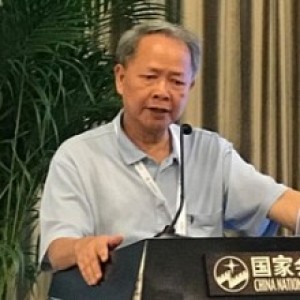
Prof. Tran Van Doan
Fujen University, Taiwan
Fujen University, Taiwan
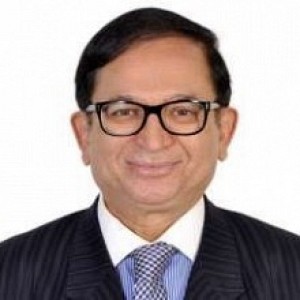
Prof. Zafar Uddin Ahmed
Vietnam National University Ho Chi Minh City
Vietnam National University Ho Chi Minh City

Prof.Dr. Phillip G.Cerny
The University of Manchester, United Kingdom
The University of Manchester, United Kingdom
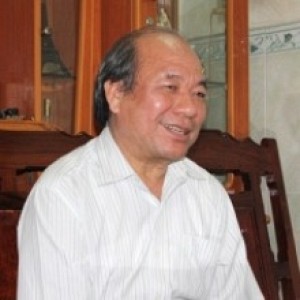
Prof. Ngo Van Le
University of Social Sciences and Humanities (VNU-HCM)
University of Social Sciences and Humanities (VNU-HCM)

Prof. Bui The Cuong
Southern Institute of Social Sciences
Southern Institute of Social Sciences
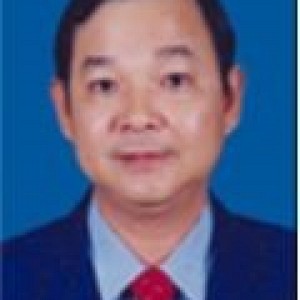
Prof. Le Quang Tri
Can Tho University
Can Tho University
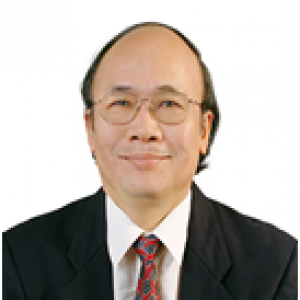
Assoc. Prof. Nguyen Van Duc
Animal Husbandry Association of Vietnam
Animal Husbandry Association of Vietnam

Assoc. Prof. Ted Yuchung Liu
National Pingtung University, Taiwan
National Pingtung University, Taiwan

PhD. Anita Doraisami
Economics Monash University, Australia
Economics Monash University, Australia

Prof. Dr. Andrew Seddon
Asia Pacific University of Technology & innovation (APU)
Asia Pacific University of Technology & innovation (APU)
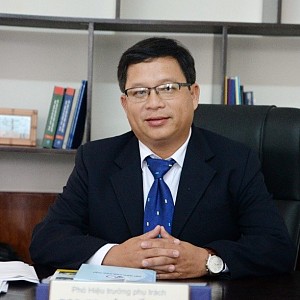
Assoc. Prof. Le Tuan Anh
Thu Dau Mot University
Thu Dau Mot University

Prof. Abtar Darshan Singh
Asia Pacific University, Malaysia
Asia Pacific University, Malaysia

Prof.Dr. Ron W.Edwards
The University of Melbourne, Australia
The University of Melbourne, Australia
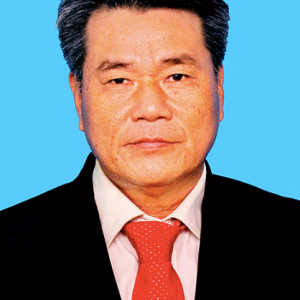
Assoc. Prof. Hoang Xuan Nien
Thu Dau Mot University
Thu Dau Mot University
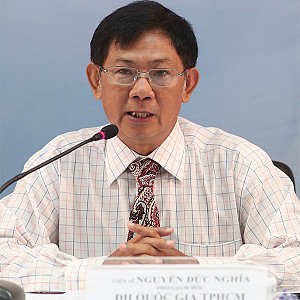
PhD. Nguyen Duc Nghia
Vietnam National University Ho Chi Minh City
Vietnam National University Ho Chi Minh City
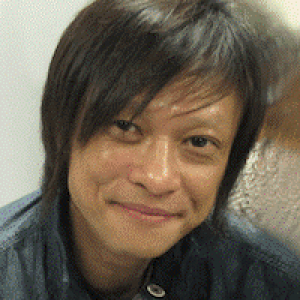
PhD. Bao Dat
Monash University (Australia)
Monash University (Australia)

PhD. Raqib Chowdhury
Monash University (Australia)
Monash University (Australia)
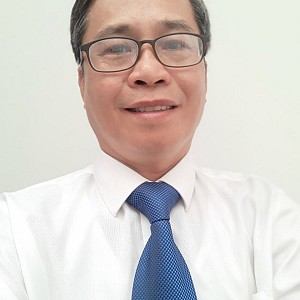
PhD. Nguyen Hoang Tuan
Thu Dau Mot University
Thu Dau Mot University

PhD. Nguyen Thi Lien Thuong
Thu Dau Mot University
Thu Dau Mot University
Assistant
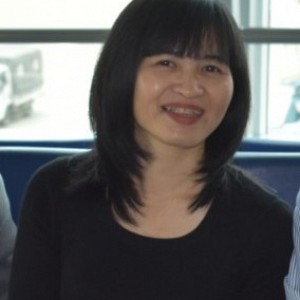
Nguyen Thi Man
Thu Dau Mot University
Thu Dau Mot University

